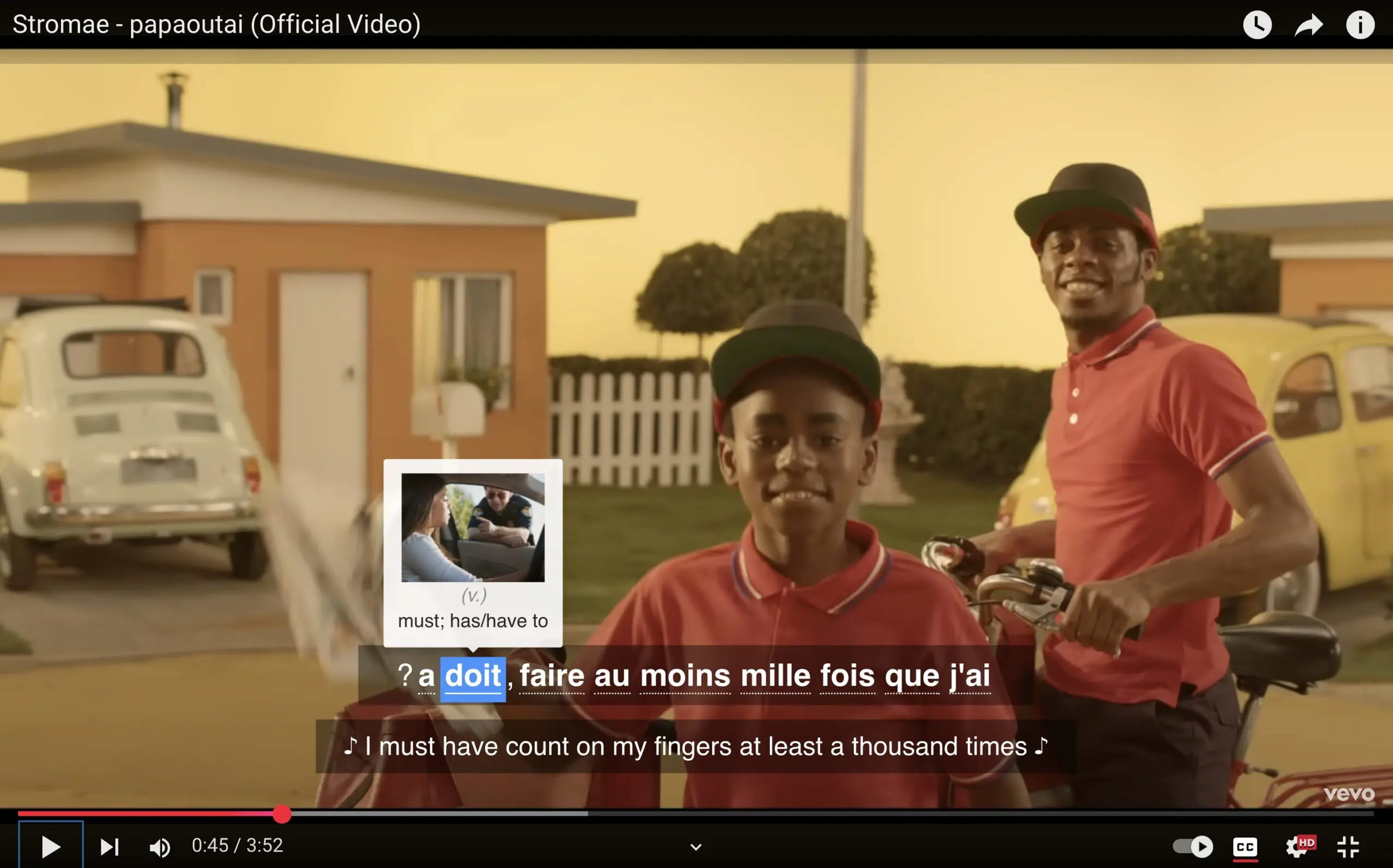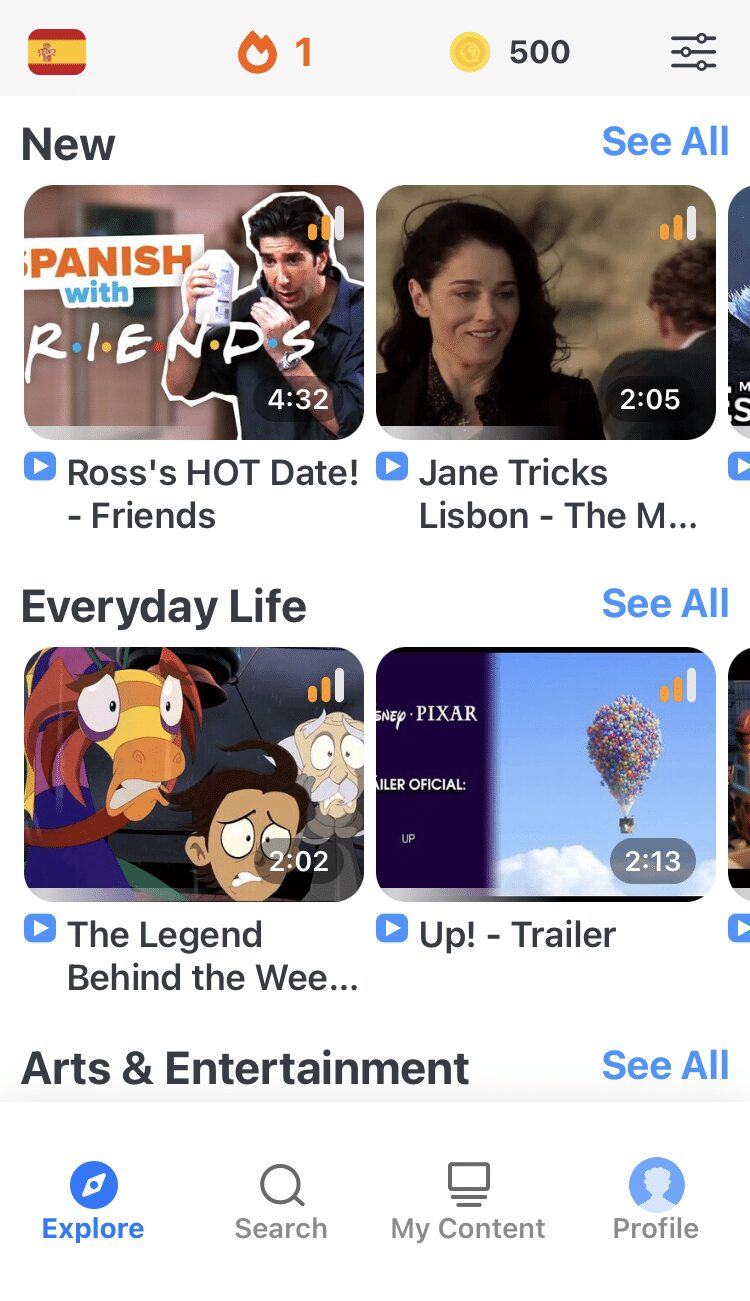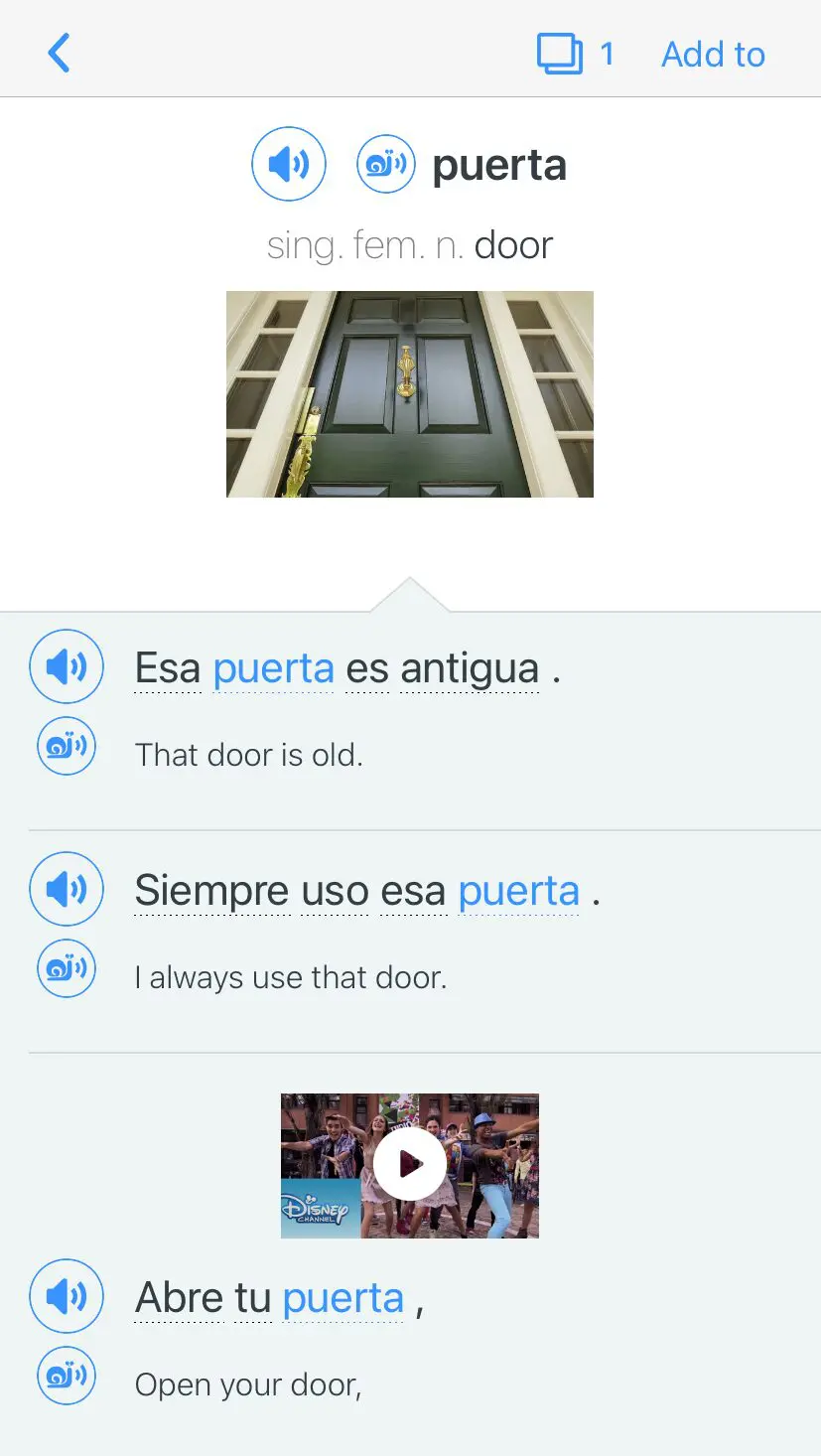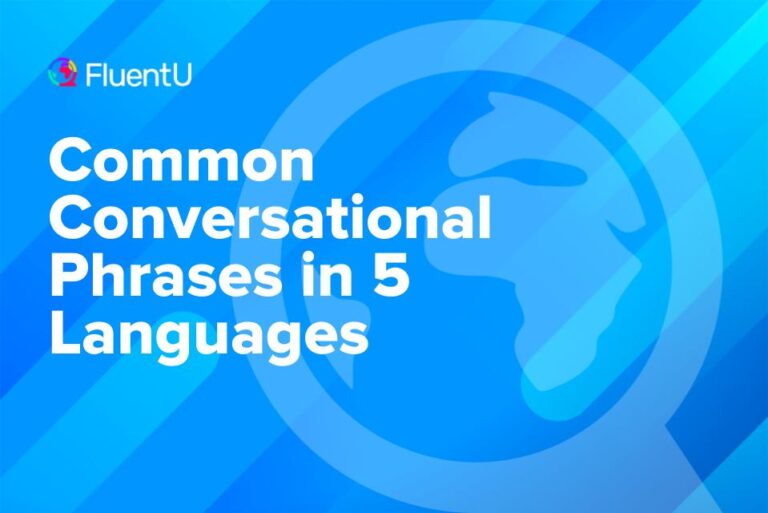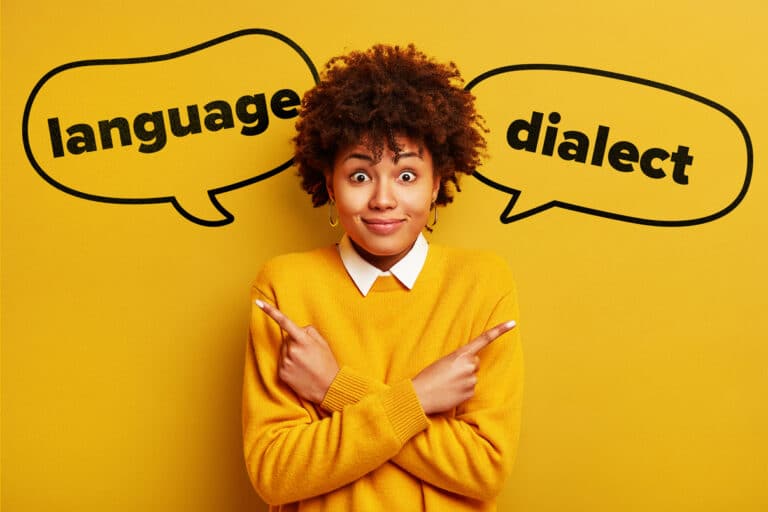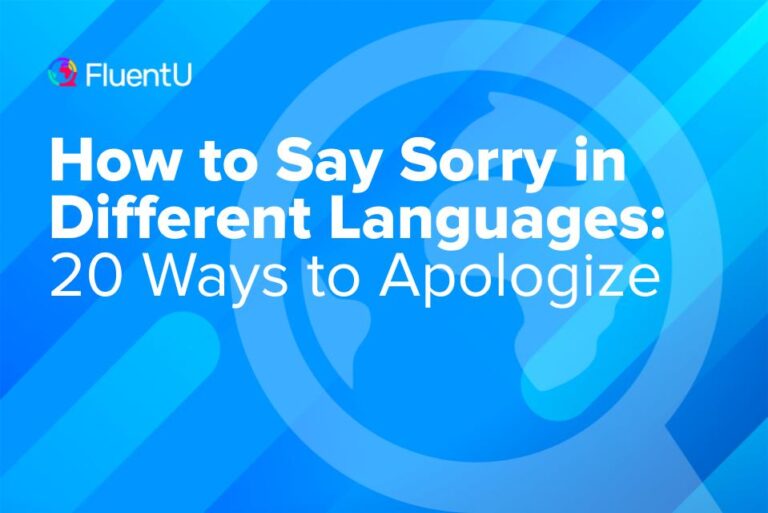10 Obscure Languages You’ve Probably Never Heard Spoken (with Videos)

Europe has close to 200. The United States, over 350. Indonesia alone has over 700. In Africa, there are nearly 2000.
We’re talking about languages.
But despite the world’s rich linguistic panoply, hundreds of languages are endangered and extinct, in large part due to globalization, war, genocide and the imposition of national languages.
Assimilation is another big contributor. Sometimes the desire to simply fit in causes people to forgo their native language and adopt the one that’s more commonly spoken.
But some languages are just special and unique, or should we say obscure?
So if you’re asking yourself, “what language should I learn?” choosing an obscure language may just be your answer.
Come with us to explore ten of the Earth’s most obscure languages.
Download: This blog post is available as a convenient and portable PDF that you can take anywhere. Click here to get a copy. (Download)
What Are Obscure Languages?
There are many factors that can contribute to a language being classified as obscure, but in general, an obscure language refers to a language that is not widely spoken or known compared to more widely used languages (like English, Chinese or Spanish).
Some of the factors that contribute to classifying a language as obscure are the number of speakers. Languages with a small number of speakers are more likely to be considered obscure.
A second consideration is the geographical distribution of the language. Languages that are spoken in isolated or less-populated regions may be less well-known on a global scale.
Other considerations are the language’s recognition and official status and if a language has a written form.
Also if a language doesn’t have a media presence (newspapers, TV shows, books, etc.), it will be more obscure.
Last, languages that are written in an unfamiliar script or alphabet may be more obscure because so few people can read them.
The Amazing Obscure Languages of Planet Earth
Xhosa
Region: South Africa
Approximate Number of Native Speakers: 8 million
Why Learn This Language: Traveling in rural South Africa and because it’s fascinating
Similar to: Zulu
Xhosa, one of South Africa’s 11 official languages and Nelson Mandela’s native tongue, boasts 8 million speakers. While this may seem substantial, it pales in comparison to Mandarin’s 900 million. The language’s uniqueness lies in clicks and tonal nuances that alter word meanings.
A single word’s tone can convey various meanings. Clicks, represented by c, x, and q, are especially intriguing. They encompass dental (tut-tut), alveolar (cork pop), and lateral (teeth suck) sounds. Each click type has multiple variations.
Pronouncing words like “ugqirha” (doctor) or “Xhosa” accurately can be challenging, even for non-native speakers. Don’t be discouraged—it’s a complex language to master!
Belarusian
Region: Belarus
Approximate Number of Native Speakers: 3 million
Why Learn This Language: To impress locals in Belarus
Similar to: Russian, Ukrainian
This is an Eastern Slavic language has shrunk a lot through the years and Russian colonization is the main cause.
The language itself has got 6 vowels, up to 48 consonants and up to 54 phonemes (English has 44). It’s written in the Cyrillic alphabet, but it’s also been written with Latin, Arabic and Hebrew script. There are also two main dialects which can be found in the northeast and the southwest. Until the early 1900s, there was really no standardized grammar. Then, finally, amidst some political unrest, Cyrillic became the only alphabet used for official writing.
Despite its turbulent past, Belarusian still perseveres. In recent years, there has been an increase in public support to make the language a larger part of the cultural identity. Let’s hope that support continues to grow.
In the meantime, please enjoy this Belarusian rap.
Silbo Gomero
Region: La Gomera, Canary Islands
Approximate Number of Native Speakers: 22,000
Why Learn This Language: So you can communicate over long distances
Similar to: None, but it’s based on Spanish
Who needs consonants, nouns, verbs and letters? The people of La Gomera Island certainly don’t. On this lovely island off the coast of Spain, the inhabitants have transformed the Spanish language so that it can be communicated through whistles. That’s right, this is a whistle language.
The people of this tiny patch of land speak Spanish—Canarian Spanish, that is—but they take great pride in Silbo Gomero. Once on the verge of extinction, there was a revival in the late 90s, and teaching it in schools on the island has been required since 1999. It was even added to the Representative List of the Intangible Cultural Heritage of Humanity by UNESCO in 2009.
The language is communicated over large valleys and ravines in this mountainous region. This is because words get jumbled and distorted over long distances. Whistling, however, can transmit with perfect clarity for up to three miles (five kilometers).
Silbo Gomero replaces the five vowels in Spanish with two tones where i is the highest pitch and o is the lowest pitch, and the other vowels fall in the middle. The consonants, however, are represented by dropping from high to low pitch, low to high pitch, breaks, steadiness and volume. For the untrained ear, all of this just sounds like a lovely melody, but for the people in La Gomera the sounds are as distinct as the letters and words on this page.
Rotokas
Region: Bougainville, Papua New Guinea
Approximate Number of Native Speakers: 4,000
Why Learn This Language: With only 12 sounds, it’s relatively easy to learn
Similar to: Eivo, Tinputz
Rotokas is a language spoken by the Rotokas people in the Bougainville region of Papua New Guinea. It is known for its extreme phonological simplicity, having one of the smallest phonemic inventories in the world. Rotokas consists of only 12 phonemes, making it remarkable for its economy of sounds.
The language gained attention from linguists due to its limited phonetic diversity, with just six consonants and six vowels. Despite this, Rotokas is rich in its grammatical structures and expressive capabilities.
Rotokas is primarily a spoken language, as it was traditionally not a written one. However, efforts have been made to develop writing systems for Rotokas in recent years to support education and communication. The language holds cultural significance for the Rotokas people and is an integral part of their heritage.
Here’s taste of some real life Rotokas:
Michif
Region: United States and Canada
Approximate Number of Native Speakers: less than 1000
Why Learn This Language: To impress the Metis people of Canada and North Dakota
Similar to: Haitian Creole
Here’s where the numbers start to reach a critical low. This is classified as an impossible language.
Michif is the language of the Metis people who are descendants of European fur traders, and located in certain regions of Canada and small pockets of North Dakota. It’s a combination of Cree, an Algonquian language, and French, and it’s believed to have been created out of a desire for a cultural identity. Although Michif is a product of both Cree and French, most Michif speakers aren’t fluent in either language.
Conceptually, Michif is quite simple. It combines French nouns and Cree verbs. Linguistic scholars tear their hair out over this.
According to these scholars, it’s impossible that these two very different languages, one being a Romance language, and the other being a polysynthetic language could possibly work together. The language breaks all the laws of linguistics and doesn’t fall into any real classification. There are even linguists who won’t acknowledge that the language exists.
But it does.
Let’s take a look at the phrase “those men.” In French you say ces hommes-là. In Cree you say neekik nâpêwak. In Michif, a combination of the two, you say neekik lii zom. While it may look like gibberish, the last two words (lii zom) when said out loud should be quite recognizable to even a novice French speaker.
Anyway, how about it, Francophiles? Can you pick out any familiar words in this Michif conversation:
Archi
Approximate Number of Native Speakers: 970
Why Learn This Language: To master one of Earth’s most complex languages
This is a Northeast Caucasian language spoken throughout seven small villages of Archib in Dagestan, Russia. This is one of the most complex languages on the list. Until recently, there was no written form of Archi, but once again Cyrillic characters have come to save the day.
The Archi language certainly likes to keep things interesting. The alphabet consists of 26 vowel phonemes and a modest 74 to 82 consonants. Also, rather than two noun classes like in many of the languages that we’re familiar with, masculine and feminine, Archi has four. It has 150 phonemes, and if you think that’s a lot, it’s believed that a single verb can have over 1.5 million forms. Somehow that stereotype that English is one of the hardest languages to learn seems to be quickly falling by the wayside. Archi will leave you sprinting to the nearest Mandarin course for a taste of something simpler.
Here’s what this endangered language sounds like:
Koro
Region: Northeast India
Approximate Number of Native Speakers: 800
Why Learn This Language: To impress Koro locals and linguists
Similar to: Aka, Miji
Koro was “discovered” by linguists in recent years during the mid-2000s. It brought the number of known global languages to 6,909. Koro is in the Tibeto-Burman language family, which consists of 400 other languages, 150 of which are spoken in India. Researchers have found that Koro is as distinct from its neighboring languages as Greek is from Vietnamese.
The main difference between Koro and its related languages is that it’s composed of different sounds. For example, in the neighboring language Aka, the word for “pig” is vo, and in Koro it’s lele.
Researchers believe that the language may have come from a group of people who were enslaved in the region. For these people, Koro isn’t just communication, but it’s strongly linked to the valley in which this small village is situated. It encompasses everything known about the region and the secrets of their own survival. If this language were to become extinct, the world wouldn’t just be losing a language, but a race of people would be losing a major part of their heritage.
You can get a sample of what researchers discovered about Koro in this video from National Geographic:
Pirahã
Region: Amazon Rainforest, Brazil
Approximate Number of Native Speakers: 380
Why Learn This Language: To communicate with locals in the Amazon and to impress linguists
Similar to: None
Pirahã is the only surviving dialect of the Mura languages. Although it has so few speakers, there’s actually no immediate threat to its extinction. The Pirahã community is largely monolingual, so there’s no concern that the language will be phased out like many of the others in the region that were replaced by Portuguese. The Pirahã have had limited interaction with the outside world except for the extensive research by Dr. Daniel Everett.
With only 10-12 phonemes, which consists of 7 consonants and 3 vowels, it’s considered the simplest language in the world.
For the women in the community, it’s even simpler. They use one less consonant than the men.
What’s most interesting about this language is that it’s largely conceptual. There are no fixed words for numbers and colors. The words hói and hoí, when said in different tones, roughly mean “small quantity” and “large quantity.” With no fixed terms for colors, rather than saying that something is “green,” they may say something along the lines of “It looks like grass.”
The Pirahã language focuses on the present. As a culture, the people don’t concern themselves with the past. If they don’t see something, then it doesn’t exist.
For example, if a bird was on a tree and then flew away to another tree, the Pirahã would say that the bird is xibipio (gone out of existence). Although the language is technically “simple,” the culture and psychology are so deeply connected that it takes something like the extensive research of Dr. Everett to really get a grasp of this unique language and culture.
Here’s a taste:
Ayapaneco
Region: Tabasco, Mexico
Approximate Number of Native Speakers: 2
Why Learn This Language: To mediate an argument between the last two speakers
Similar to: Mixe-Zoque languages
This centuries-old language is nearly extinct. It was once a minority language spoken regularly throughout the region, but began to die out on account of the passage of time, modernization, and the widespread use of Spanish. Ayapaneco survived wars and natural disasters and now it’s down to its last legs. There are only two people who actually speak it.
What’s interesting is that for many years, the last two speakers, Manuel Segovia and Isidro Velazquez, would not speak to each other. Whether there was a falling out or it was just due to the limitations of old age, no one is really sure. However, for quite some time, with the two men refusing to speak Ayapaneco, it was like the language had actually died. Luckily, within the last two years, Manuel and Isidro called for a revival and decided that they would teach the language to anyone who wanted to learn. Now there’s a strong movement in the region to keep the language alive.
We’ll be rooting for your survival, Ayapaneco. For now, here’s how the language sounds:
Sentinelese
Region: North Sentinel Island in the Bay of Bengal
Approximate Number of Native Speakers: Unknown
Why Learn This Language: To save your own life if you reach North Sentinel Island
Similar to: Unknown
There’s one thing that makes Sentinelese stand out from all of the other languages on this list. No one has ever heard it. It’s “forbidden.”
That is, no one apart from the native speakers themselves.
The small North Sentinel Island, just a touch larger than the island of Manhattan, houses an isolated tribe of people who aren’t too keen on foreign relations. Basically, if you get too close they’ll shoot an arrow through you. Anthropologist Trilokinath Pandit is the only person to have made contact with the Sentinelese without having been severely wounded or killed.
The only information on this language, obtained from very scant observations, is that the Sentinelese greet each other in a two-toned system; but even this little bit of intelligence isn’t reliable. Since no one has been able to study them extensively, these sounds could have been misinterpreted as greetings. It’s thought that the language may have some similarities to the surrounding Andamanese tribes, but no one can be sure.
If you’re really keen on hearing what are sure to be the mellifluous musings of the Sentinelese people, maybe you can make history. We’d love some more data for this post. If you manage to make it onto the island unscathed, you won’t have to go searching. They’ll find you. See if they’d be up for a chat. Let us know what comes of it.
This didn’t stop this polyglot from trying to learn this forbidden language:
If you don’t necessarily want to learn to speak these obscure languages yourself and want to try something more common, you can do that with a language learning program such as FluentU.
FluentU takes authentic videos—like music videos, movie trailers, news and inspiring talks—and turns them into personalized language learning lessons.
You can try FluentU for free for 2 weeks. Check out the website or download the iOS app or Android app.
P.S. Click here to take advantage of our current sale! (Expires at the end of this month.)
*Bonus: Klingon
Region of the World: Anywhere that there are hardcore “Star Trek” fans
Approximate Number of Fluent Speakers: 30
Why Learn This Language: To be part of the global “Star Trek” fan community
Similar to: Other constructed languages: Esperanto, Dothraki (from “Game of Thrones”) and Elvish (from “The Lord of the Rings”)
Now, let us “boldly go where no man has gone before.” Okay, well, maybe some have gone there, but Klingon doesn’t typically end up on these kinds of lists. That may be because of the small issue that it isn’t technically a real language. Klingon was created for the “Star Trek” series, spoken by the aliens from the planet Kronos. It was turned into a full on language by linguist Mark Okrand.
With only 3,000 words, it’s difficult to have any meaningful conversations in Klingon, especially since many of the words are centered on things like intergalactic wars, spacecrafts and other such things we generally don’t discuss most days of the week. Speakers have to be very creative when trying to express themselves. For example, something as simple as “how are you?” becomes bIpIv’a (are you healthy?), and “cheers” becomes ‘IwlIj jachjaj (may your blood scream). Apparently, there are about 30 people in the world who don’t mind the trouble. There was even a man who tried to raise his son in the language.
As long as “Star Trek” conventions continue to grace major cities, Klingon is sure to continue touching fans of generations past, present and future. And the Klingon Language Institute will see to it. Believe it or not, Duolingo has a Klingon course.
Here’s a sample of Klingon from the show “Big Bang Theory”:
Our journey around the globe has come to an end. Hopefully, it has inspired you to learn something different and new. Maybe you can even challenge yourself to actually learn one of these tough languages, at least the ones that are accessible.
You’ll certainly be the center of happy hour if you suddenly drop some fluent Rotokas on your colleagues; just be sure to apply the unapologetic wisdom of comedian Kevin Hart, and “say it with your chest.”
Download: This blog post is available as a convenient and portable PDF that you can take anywhere. Click here to get a copy. (Download)
And One More Thing...
If you want to learn a new language with real-world videos, let me tell you about my favorite language-learning tool–FluentU.
With FluentU, you can turn any subtitled YouTube or Netflix video into an interactive language lesson. That means you’re not just studying a language—you’re experiencing it exactly as native speakers use it.
No boring drills. No dry textbooks. Just the kind of content you’d actually watch anyway, but with tools to help you learn. My favorite feature lets you import YouTube videos directly into your FluentU account.
And that’s just the beginning! You can also check out our extensive video library packed with music videos, movie trailers, news clips and more!
Everything is organized by difficulty level, media type, and topic, so you can easily find videos that match your interests and skill level.
Personally, I love watching clips from movies and shows where there’s plenty of slang and expressions that will help you understand native speakers–and sound more like them!
As you watch, you’ll follow along with interactive, dual-language subtitles. Come across a new word or phrase? Just hover over it for an instant translation or click to hear its pronunciation, see example sentences, and more.
Once you’re done watching, FluentU reinforces what you’ve learned by showing you more examples of key words and phrases from the video—then quizzes you to check your understanding. You’ll even get extra practice with tricky words and reminders when it’s time to review.
We know what it takes to make real progress in a new language, and we’ve built FluentU to help you get there. You can use FluentU on your computer, tablet, or download our app from the App Store or Google Play.
Ready to start learning? Click here to take advantage of our current sale (it expires at the end of this month). And your first 2 weeks are free!

